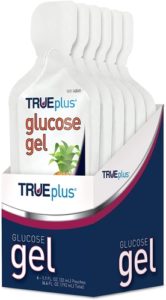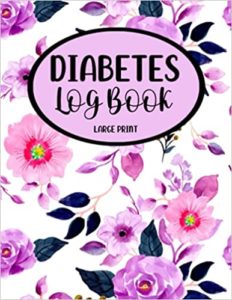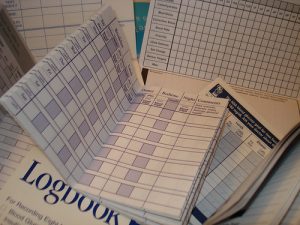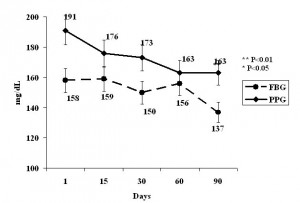Top 5 Best Diabetic Carb Counter Apps
How can using a Carb Counter App for Diabetes Help Me?
For people living with diabetes, prioritizing their health is of utmost importance. According to the American Diabetes Association, people with underlying health conditions including diabetes have a greater risk of complications from Corona Virus (COVID-19).
Studies show that using diabetes apps can greatly improve health for people living with diabetes. For instance, a review published in the Diabetes, Obesity and Metabolism journal in March 2020 found that using a diabetes app leads to a drop in average blood sugar levels or hemoglobin A1C of 0.57%.

Here are the top 5 smartly designed diabetic carb counter apps to consider using if you have diabetes.
 Fooducate
Fooducate
Fooducate is an easy-to-use nutrition-focused app that helps you make health-conscious decisions. It empowers you to scan UPC codes for quality and dietary information about the foods you are eating.
The tracking app uses an in-built database of scannable barcodes allowing you to keep count of your macronutrients (fats, carbohydrates, and proteins) intake. Fooducate also helps you make healthy choices by accessing a food’s nutrition quality using its assigned letter grade (A, B, C, or D).
The app then provides you with clear explanations, good alternative recommendations, and tips from community support and nutrition professionals so you can continue making smart decisions to help you achieve your nutritional goals for optimal blood glucose management.
You can also use the app to input exercise, access your daily intake, calculate your net calories, and keep track of your progress over a set period of time. Its biggest strength is in its in-built functionality and increasing health awareness.
Fooducate is free for Android and iPhone but its built-in functionality for calculating and scanning feature can be upgraded for a cost.
 Glucose Buddy
Glucose Buddy
Glucose Buddy is a data storage utility that allows users to track their carbohydrate consumption, glucose numbers, insulin dosage, and activities. The app syncs with monitoring systems such as Dexcom G5 and G6 and it helps you build a detailed record of your overall health while keeping count of your food intake and exercise.
Glucose Buddy also offers push notifications as a reminder of when to check your blood glucose next. The app also features a chat display that helps you track patterns to gain a better understanding of your blood glucose trends and create printable reports that you can bring to your physician’s appointment.
Glucose buddy standard version is free for both Android and iPhone, but the premium version offers a monthly or annual subscription service for a customizable and ad-free experience, including community support, enhanced filters, an A1C calculator and desktop login.
 Keto Diet App Carb Manager
Keto Diet App Carb Manager
Keto Diet App focuses on keeping track of carbs, as well as calories, fats, and protein, with a bar-code scanner and database of foods. The app also allows you to log your meals with voice memos and photos. You can also use it to log exercises and set and track your weight loss goals. However, syncing with a fitness tracker requires an upgrade to the annual or monthly subscription service at a fee.
Keto diet app also includes features for users following the ketogenic diet or a low-carbohydrate diet. However, it’s essential to note that these diets are not appropriate for everyone. Therefore, you should be careful about taking advice from an app and always check with your dietitian, certified diabetes care specialist, or doctor.
The free version of the app offers a macro tracker, exercise tracker, calorie counter, food diary, and weight log (charts both body mass index and weight loss), but upgrading to the subscription service allows users to also track insulin and blood glucose values. The app is available for both Android and iPhone.
 Figwee Visual Food Diary
Figwee Visual Food Diary
Research shows that most people, including people with diabetes, don’t know what standard food portions look like. Therefore, unless they log their meals, they are probably logging inaccurate food portion sizes.
Figwee Visual Food Diary allows you to view photographs of incremental food portion sizes to ensure that the information you’re logging is accurate.
You simply need to pick a photo that matches the food you ate, adjust the slider to match the portion that you ate before, and then add it to your food diary.
The app also provides nutritional info (cholesterol, carbs, calories, fat, etc.) for the portion size you ate. One of the key strengths of Figwee is that it allows you to visualize what a portion actually looks like.
The app is available for both Android and iPhone but you can upgrade to the premium version for additional features including an activity tracker, zero ads, desktop integration, and custom food builder.
 mySugr
mySugr
mySugr features an aesthetically appealing and easy-to-use interface and is equipped with handy features including a 3-month overview of your glucose levels for accurate tracking of your A1C. It also allows you to input and tracks your meals, carb intake, and meds. The app can be synchronized with the Apple Health app to allow the collection of step data points and physical activity.
The pro subscription allows you to set reminders to log blood sugar levels, calculate insulin doses, as well as meal shots. You can also download reports and send them directly to your diabetes educators or doctors.
Conclusion
As you explore diabetic carb-counting apps, it’s important to keep in mind that your main goal is to find an app that will be a good fit for you and make your life easier. Find apps that give you useful information, are easy to use, and sync seamlessly with your devices.
Although diabetes apps are valuable tools, they should not replace individualized medical care and advice. It’s recommended that you walk through your diabetic apps with your doctor to be sure they are a suitable tool for you.
Learn more about the DARIO glucose Meter – turn your smart phone into a glucose meter HERE!






 Data collection and logbooks are a critical part of ensuring your diabetes remains under control. Writing down the numbers makes it easier to see blood glucose patterns and easily know whether you are within your target levels or not.
Data collection and logbooks are a critical part of ensuring your diabetes remains under control. Writing down the numbers makes it easier to see blood glucose patterns and easily know whether you are within your target levels or not. Diabetes patients have difficulty using or creating enough insulin, the hormone responsible for converting blood sugar into energy. There’s no standard blood glucose chart for all diabetes patients. However, organizations such as the AACE (American Association of Clinical Endocrinologists) and the ADA offer recommendations on target blood glucose levels as a baseline.
Diabetes patients have difficulty using or creating enough insulin, the hormone responsible for converting blood sugar into energy. There’s no standard blood glucose chart for all diabetes patients. However, organizations such as the AACE (American Association of Clinical Endocrinologists) and the ADA offer recommendations on target blood glucose levels as a baseline.


 Information on your postprandial blood sugar levels can help you detect problematic areas in very important ways. According to the AACE (American Association of Clinical Endocrinologists) when blood sugar levels rise after meals, and remain elevated, it is usually hard to lower them to the desired range. It is important to keep in mind that continuously high A1C levels increase the risk of developing diabetes-related complications.
Information on your postprandial blood sugar levels can help you detect problematic areas in very important ways. According to the AACE (American Association of Clinical Endocrinologists) when blood sugar levels rise after meals, and remain elevated, it is usually hard to lower them to the desired range. It is important to keep in mind that continuously high A1C levels increase the risk of developing diabetes-related complications.